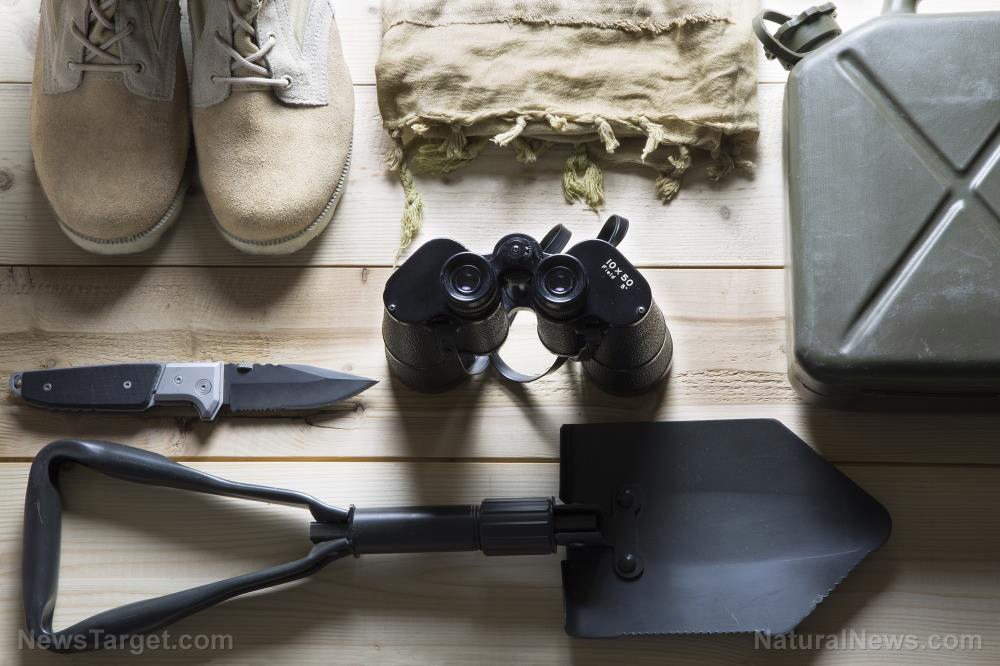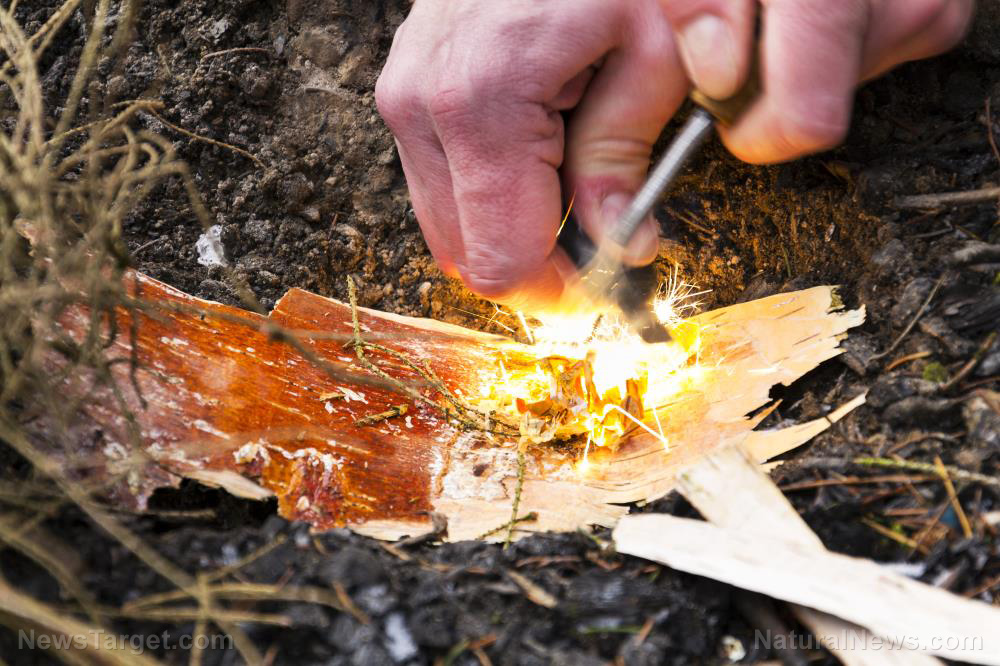How do you keep yourself well-hidden in a SHTF scenario?
09/17/2019 / By Zoey Sky

When SHTF, you may need to use camouflage methods to protect yourself and your loved ones. Use the techniques below to conceal vehicles and your property against attackers. (h/t to SurvivalBlog.com)
Camo basics
It is best to master the following basic concealment tips before attempting the camo techniques detailed below. Practice them while you’re hunting to see which ones work best for you.
- Conceal your scent. When hunting, this can help hide you from prey with an extremely sensitive sense of smell. Avoid using products not natural to the human scent, like deodorant, perfume, or tobacco, if you plan to go hunting.
- Use a high-quality ghillie suit. You can either buy one or make your own.
- When in urban areas, conceal yourself by blending in with other people.
Camouflaging vehicles
Vehicles can be more difficult to camouflage due to their larger size. A simple technique to conceal your car involves repainting it using a flat earth tone.
A more complicated technique will require Hessian poles, which are long poles that you need to stick in the ground. The poles are then draped with camouflage netting.
Hessian poles break up the distinctive outline of your car. Use a large length of scrap metal or smooth branches as “spreaders” at the ends of Hessian poles.
Smaller vehicles, like compact ATVs (all-terrain vehicles), can be concealed using old clothes hanger T-bars. Use the bars as spreaders and make sure the netting breaks up the vehicle’s outline. Don’t just drape the netting over your vehicle. This won’t be enough to conceal your vehicle from trained eyes.
Building foxholes and sniper hides
Unlike foxholes, sniper hides aren’t deep in the ground, and as a consequence, they don’t offer significant protection against projectiles or indirect fire.
Sniper hides are built almost the same way as foxholes. When building a sniper hide, use sturdy, natural vegetation. Set up your sniper hide in a dense brush-filled or wooded area.
Steps for building a sniper hide:
- Stick four or more sturdy one-inch branches into the ground. Bury the sticks at least 1?4 to 1/3 in the ground. Make sure the sticks protrude one foot or less from the ground.
- Nail or screw more sticks together on the top of the first set of sticks. Keep going until you form a rim around the original set of sticks.
- Add netting, foliage, and more sticks to the structure.
- Rub mud or apply flat earth-tone spray paint to nails or screws to dull their shine.
- Depending on how deep the hole is, you may want need to heighten the roof so you can sit comfortably.
Steps for building a foxhole:
- Foxholes are dug in the ground. Traditional military-style foxholes are usually dug armpit deep.
- Layer the inside of the hole with wood and supplies to make it more comfortable.
- Cover the top with foliage or an irregularly-shaped oblong sheet of plywood.
Winter camo tips
Snow camouflage is crucial for people who reside in a northern climate. You may need to use white, black, brown, or a combination of the three to blend in.
Matching color schemes have pros and cons. If you’re with a survival group, using matching color schemes makes it easier to recognize each other. Unfortunately, a group using matching color schemes is easier to spot compared to a lone sniper.
Snow camouflage gear must be warm to prevent hypothermia, especially if you need to stay still for several hours. Over-sized gear can go over winter clothing.
Customize snow camo gear by adding brown spots or branches if you’re in the woods or near shrubbery. If you’re out in open snow, use smooth and plain white camo gear. (Related: Prepper essentials: A guide to camouflaging your property.)
How to spot camouflage
Spotting camouflage is an important skill for those who may face attackers when SHTF. Use binoculars or a spotting scope, but only if you can stop reflections. One method is to cover the scope or lens with thin netting.
Lay very still and stay quiet. Scan areas where your enemies are most likely to hide, like near cover or in secure sniper hide locations. Don’t look for colors, focus on the shape of a person. A reflection could mean someone is turning a scope towards you.
You can also use your hearing to spot a concealed attacker. Listen for common signs like the cycling or reloading of a firearm, noise from radio headsets, or breathing (when it is very quiet).
Familiarize yourself with these camouflage techniques and learn how to spot concealed attackers. Doing so can help increase your chances of survival when SHTF.
Sources include:
Tagged Under: bug out, camouflage, Collapse, concealment, disaster, emergency, foxholes, Gear, ghillie suit, guns, Hessian poles, how-to, off grid, preparedness, prepper, prepping, protection, route planning, self-defense, self-reliance, SHTF, sniper hides, spotting camouflage, survival, survivalist, tips, tools, weapons, wilderness survival, winter camouflage
RECENT NEWS & ARTICLES
COPYRIGHT © 2018 PANIC.NEWS
All content posted on this site is protected under Free Speech. Panic.news is not responsible for content written by contributing authors. The information on this site is provided for educational and entertainment purposes only. It is not intended as a substitute for professional advice of any kind. Panic.news assumes no responsibility for the use or misuse of this material. All trademarks, registered trademarks and service marks mentioned on this site are the property of their respective owners.



















